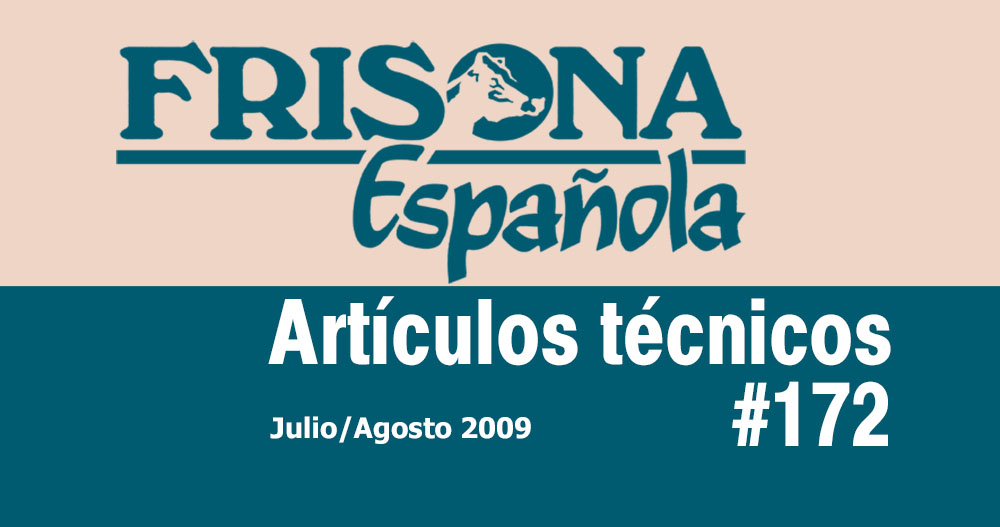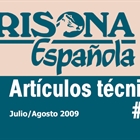Technical article published in Frisona Española Magazine Issue 172 (July-August 2009)
I started studying veterinary medicine in 1979. At that time, many of my colleagues came from rural areas. Their fathers or close relatives were ranchers, and sometimes even veterinarians. Nowadays almost no one comes from rural areas, which may be one of the reasons for the lack of interest among veterinary students in the bovine medicine profession. In my case, my grandparents were ranchers. When I was little, one of them always told me stories about cows. How wolves kill sheep and how they travel through Madrid in their nomadic activities.
“We had to go through Alcalá Street and through the Alcalá Gate itself at night because it couldn’t be done during the day,” he told me.
He also told me about the different treatments and surgical techniques they perform on the animals. I was really impressed with the surgery they performed on the cows. One of them is treating their ribs.
“When their eyes get really bad,” he told me, “you put a piece of rye straw through a hole in their nose and it reaches the eye, and that’s how they heal.” When I got older Finally, I was no longer surprised by what my grandfather told me. I think this happens to everyone. But after completing veterinary studies and working specifically with cattle, over time I have come to recognize some of the diseases he told me about, and in many cases I have discovered the significance of those treatments he told me about.
Few people today know the word rija. Rija is the common name for both diseases, according to the Espasa Medical Dictionary of the Faculty of Medicine of the University of Navarra. One is dacryocystitis, an acute infection of the tear sac that causes pain, redness, and swelling of the medial canthus above the base of the nose. The other is chronic dacryocystitis: a condition in which the nasolacrimal duct is permanently blocked, resulting in persistent tearing due to the closure of the natural tear drainage pathway.
The nasolacrimal duct connects the eyelid sacs to the nose. Through it, the tears constantly produced by the eyes flow into the nose. That’s why we often blow our noses when we’re about to cry. It’s not that we suddenly catch a cold, it’s that our noses are filled with tears.
But can cows get Rija disease? People do it, dogs do it, but I have no evidence that it happens in cattle, but it must have been the case in my little town, Montejo de la Sierra, in the early 20th century Frequently occurs in cattle. It should also be an important disease because directing the nasolacrimal duct into cattle is not easy. Among other things, it involved having to hold it correctly by two or three people, or, more likely, strapping it to a stand in the village. Rija is characterized by constant tears and her face is constantly wet with tears. As we said before, this can be caused by a blocked nasolacrimal duct, or more commonly, by the production of too many tears that cannot drain and overflow, like what happens when we cry or have conjunctivitis.
If you want to read the full text, you can download it from this link Or also from “documentation”.
Technical article by Juan Vicente González Martín Spanish Frisian Magazine Issue 172corresponding to July and August 2009.
Link
- YoutubeSubscribe to the CONAFE YouTube channel – Spanish Frisian
- FacebookFollow us on the CONAFE – Spanish Friesland Facebook page
-
TwitterFollow us on CONAFE Twitter – Spanish Frisian - InstagramFollow us on CONAFE Instagram – Spanish Frisian



